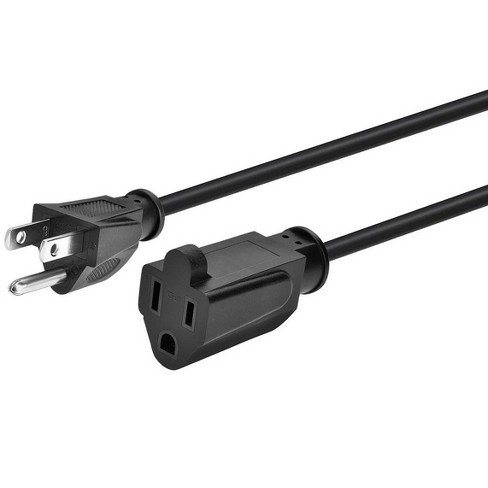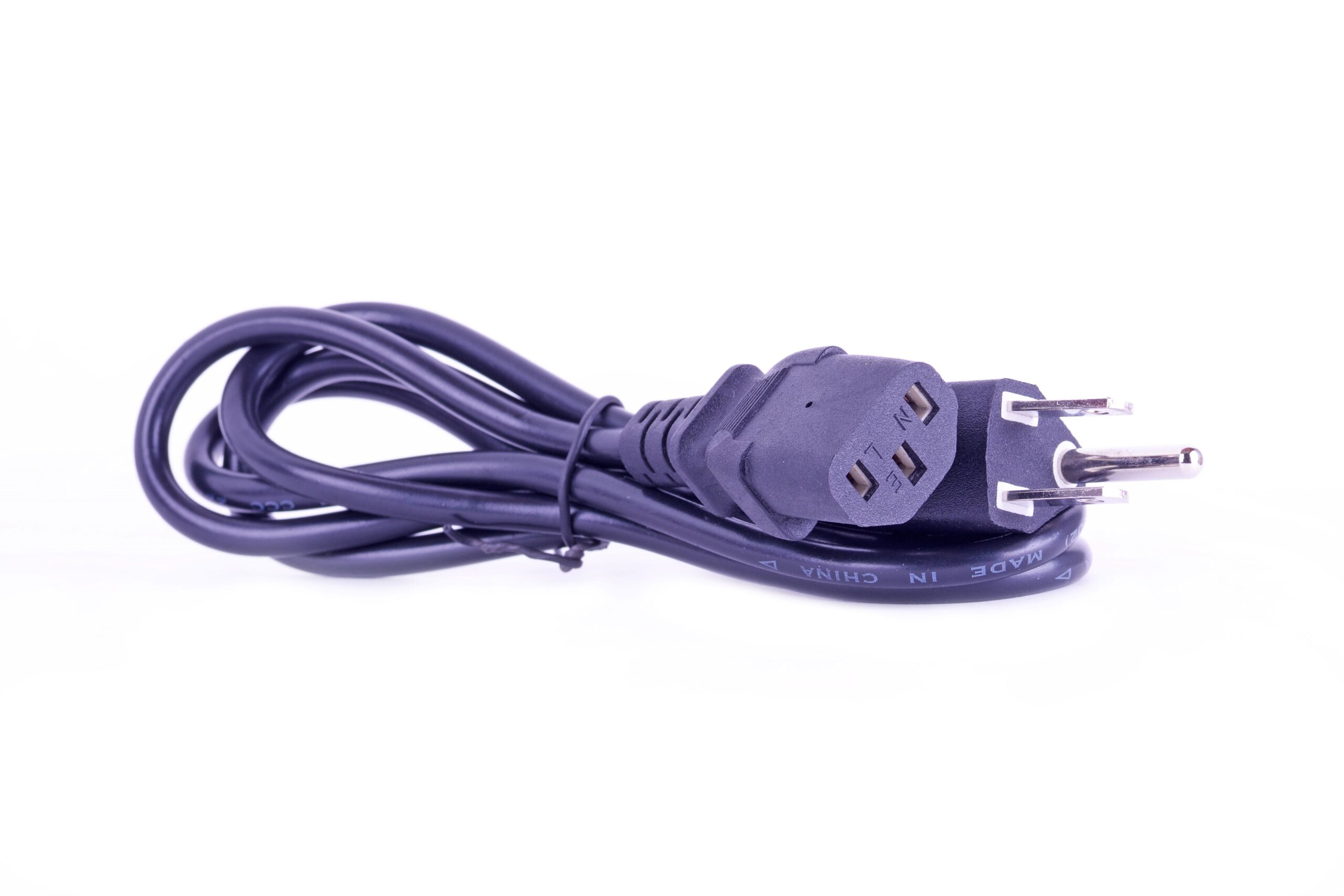A 3-prong extension cord connects electrical devices to a distant power outlet. It includes a ground wire for enhanced safety.
Extension cords are a common household and workplace accessory, providing a convenient solution when the length of a device’s power cable falls short of reaching a wall socket. The 3-prong design is the standard for modern electrical appliances, ensuring devices are properly grounded to prevent electrical shocks.
This type of cord is essential for operating power tools, setting up entertainment systems, or any situation that requires electricity beyond the immediate vicinity of an outlet. It is crucial to select an extension cord that is rated for the power requirements of the connected devices and is suitable for the environment, whether it’s for indoor or outdoor use.
The Basics Of 3 Prong Extension Cords
Understanding the basics of 3 prong extension cords is crucial for safe and effective use. These cords provide a reliable way to extend the reach of your power sources, ensuring that you can operate your devices wherever you need them safely.
Understanding The Purpose
A 3 prong extension cord serves a specific purpose. It safely extends electricity to devices away from wall outlets. Each prong plays a critical role in ensuring safety and functionality:
- Live wire: carries the current to the appliance.
- Neutral wire: carries the current back.
- Ground wire: acts as a safety measure to prevent shocks.
This design minimizes risks of electrical shocks and short circuits, making it ideal for both indoor and outdoor use.
Key Components And Features
The design of a 3 prong extension cord includes several key components and features that enhance its efficiency and safety:
| Component | Function |
|---|---|
| Plug | Connects to the power source |
| Socket | Device plugs into this end |
| Cable | Transmits electricity |
Each part is built to handle a certain amount of electrical load, marked by its gauge rating. A lower gauge number means the cord can handle more power, which is essential for operating heavy-duty appliances.

Credit: www.amazon.com
Safety Considerations
When using a 3 Prong Extension Cord, safety is key. Let’s explore how to keep everyone safe.
Grounding And Protection
Grounding is critical for safety. It prevents electrical shock. A 3 prong extension cord has a third prong for this reason. This prong connects to the earth, allowing unwanted energy to escape.
- Check the cord for a third prong.
- Ensure this prong is not damaged.
A ground fault circuit interrupter (GFCI) adds extra protection. It turns off the power if a risk of shock exists. Here’s how to use it:
- Plug the extension cord into a GFCI outlet.
- Test the GFCI regularly to ensure it works.
Proper Usage Guidelines
To use a 3 Prong Extension Cord safely, follow these tips:
| Do | Don’t |
|---|---|
| Use for short-term projects. | Use as a permanent solution. |
| Keep the cord visible. | Cover with rugs or furniture. |
| Unplug when not in use. | Leave plugged in unattended. |
Inspect the cord before each use. Look for signs of wear or damage. Discard cords that are frayed or have exposed wires.
Remember, safety first. Always follow these guidelines to prevent accidents.
Choosing The Right 3 Prong Extension Cord
Choosing the right 3 Prong Extension Cord is vital for safety and efficiency. Whether powering tools, appliances, or electronics, the perfect cord meets specific needs. Important factors include length, gauge, and usage environment. This guide helps make an informed decision.
Length And Gauge Selection
Selecting the correct length and gauge for a 3 prong extension cord is essential. Here’s what to consider:
- Shorter cords reduce power drop and are safer.
- Longer cords offer more reach but need a thicker gauge.
| Length | Gauge | Usage |
|---|---|---|
| Under 25 feet | 16 AWG | Light-duty appliances |
| 25-50 feet | 14 AWG | Medium-duty tools |
| 50-100 feet | 12 AWG or thicker | Heavy-duty equipment |
Choose a thicker gauge for longer distances to ensure safety and device performance.
Indoor Vs. Outdoor Use
The right extension cord also depends on where it will be used:
- Indoor cords are lighter and designed for safe home use.
- Outdoor cords have durable coatings and are weather-resistant.
Look for cords with UL certification and weatherproof ratings for outdoor activities. Ensure they can handle temperature changes and moisture.
Common Applications
Three-prong extension cords power countless devices. Their common applications span from living rooms to large factories. Let’s plug into the versatility of these cords.
Household Use
The typical home is a hub for three-prong extension cords. These cords ensure safety and reliability. They are a household staple for:
- Electronics charging: Phones, laptops, and tablets.
- Home appliances: Microwaves, toasters, and blenders.
- Entertainment systems: TVs, gaming consoles, and sound systems.
- Seasonal decorations: Christmas lights and Halloween animatronics.
Commercial And Industrial Use
Businesses and factories rely on three-prong cords for:
- Power tools: Drills, saws, and sanders.
- Office equipment: Computers, printers, and copiers.
- Heavy machinery: Industrial mixers, conveyor belts, and compressors.
- Emergency lighting: Ensuring safety during power outages.
Maintenance And Care
Keeping your 3 prong extension cord in top condition is crucial for safety and longevity. Proper maintenance and care help prevent electrical hazards and ensure your cord remains reliable. Follow these simple steps to keep your extension cord like new.
Inspection And Testing
Regular checks can catch damage early. Look for these signs:
- Frayed wires – a potential fire risk.
- Cracked insulation – exposes wires and increases shock risk.
- Bent prongs – might cause a poor connection.
Test your cord with a multimeter for electrical issues. Ensure it passes the test before use.
Storage And Handling Tips
Proper storage extends your cord’s life. Use these tips:
- Keep in a dry, cool place.
- Avoid tight coils to prevent kinks.
- Hang on a cord reel or hook for tangle-free storage.
Handle with care:
- Unplug by pulling the plug, not the cord.
- Avoid running cords under carpets or through doorways.
- Do not yank the cord from the outlet.

Credit: www.target.com
Troubleshooting Issues
Extension cords are essential in our daily lives. They help power devices in far corners. But sometimes, they stop working. Let’s find out why and fix it. Follow these steps to troubleshoot your 3 prong extension cord.
Identifying Damage
Check your extension cord for any signs of damage. This includes cuts, fraying, or exposed wires. Look at the plugs and the sockets too. If you see any damage, it’s time for a closer inspection or replacement.
- Burn marks or melting
- Loose prongs
- Cracked casing
Using a damaged cord can be dangerous. It can cause shocks or fires. Be careful and always check your cord before use.
Repair And Replacement
If you find damage, you might need to repair or replace your cord. Simple fixes like taping a small cut are okay for a short time. But for big problems, get a new cord.
Never use a cord with exposed wiring. It’s not safe. If your cord is not working and looks fine, test it with a different device. If it still doesn’t work, replace it.
| Issue | Action |
|---|---|
| Small cut on cord | Use electrical tape for a temporary fix |
| Exposed wires | Replace the cord immediately |
| Loose prongs | Tighten or replace the plug if possible |
For repairs, always turn off the power. If you’re unsure, contact a professional. Safety comes first!
Alternatives And Accessories
Are you thinking about upgrading your 3 prong extension cord setup? Explore some smart alternatives and handy accessories to enhance your power management at home or office. From power strips to wireless charging solutions, let’s dive into the options available.
Power Strips And Surge Protectors
Power strips are a great way to expand the number of devices you can plug in. They come with multiple outlets in a single unit. But it’s not just about adding more outlets. Surge protectors shield your gadgets from unexpected power spikes. Protect your electronics with these accessories:
- Basic power strips: More outlets for more devices.
- Surge-protected power strips: Extra safety for your electronics.
- Pivoting power strips: Flexible outlet positioning.
- USB-equipped power strips: Charge devices without adapters.
Wireless Power Solutions
Wireless charging is the future. Say goodbye to tangled cords. Embrace the convenience of wireless power solutions. Ideal for phones and tablets, these chargers use inductive charging technology. Place your device on a pad and watch it charge. No plugging and unplugging. Check out these wireless accessories:
- Wireless charging pads: Simple, flat surfaces for easy charging.
- Wireless charging stands: Charge your device upright.
- Multi-device wireless chargers: Charge multiple gadgets at once.
- Portable wireless chargers: Charge on the go with no cords.

Credit: www.target.com
Environmental Impact
Extension cords play a big role in our daily lives. They power our devices and tools. Yet, they also affect our planet. It is vital to understand the environmental impact of these cords. This includes their full life cycle. From production to the end of their use, we must consider it all.
Recycling And Disposal
Proper disposal of extension cords is key. Many parts of the cord can be recycled. This includes the metal wiring and plastic casing. Recycling reduces waste in landfills. It also saves resources.
- Check local recycling programs for electronic waste.
- Extension cords should never be thrown in regular trash.
- Some components may be hazardous if not handled correctly.
Energy Efficiency Considerations
Energy efficiency is another crucial factor. Quality cords ensure less energy loss. This is good for the environment. It also saves money on electricity bills.
| Feature | Benefit |
|---|---|
| Thick insulation | Reduces energy loss |
| Proper length | Avoids unnecessary power usage |
| Quality materials | Increases durability and efficiency |
Choose cords with energy-saving features. Look for energy certifications. This ensures you are doing your part for the planet.
Frequently Asked Questions
Are Three Prong Extension Cords Safe?
Three-prong extension cords are generally safe when used properly for grounding purposes and conforming to power requirements. Ensure they are in good condition and avoid overloading to maintain safety.
Can I Use A 3 Prong Extension Cord With A 2 Prong Device?
Yes, you can use a 3 prong extension cord with a 2 prong device; ensure the cord is properly grounded for safety.
What’s The Difference Between A 2 Prong And 3 Prong Extension Cord?
A 2 prong extension cord lacks a ground wire, suitable for basic electronics. A 3 prong cord includes a ground wire, enhancing safety for appliances. This design difference provides extra protection against electrical faults.
What Is A 3 Prong Power Cord Used For?
A 3 prong power cord connects electrical appliances to a grounded power source. It features two flat parallel prongs and one round prong, enhancing safety by preventing electrical shocks. This cord is commonly used for larger devices that require grounding for additional safety.
Conclusion
Summing up, a 3 prong extension cord is essential for various electrical needs. It ensures safety and convenience in powering devices. Remember to choose the right length and gauge for your requirements. Keep cords well-maintained to prevent hazards. Invest in a quality cord to power your world safely.




